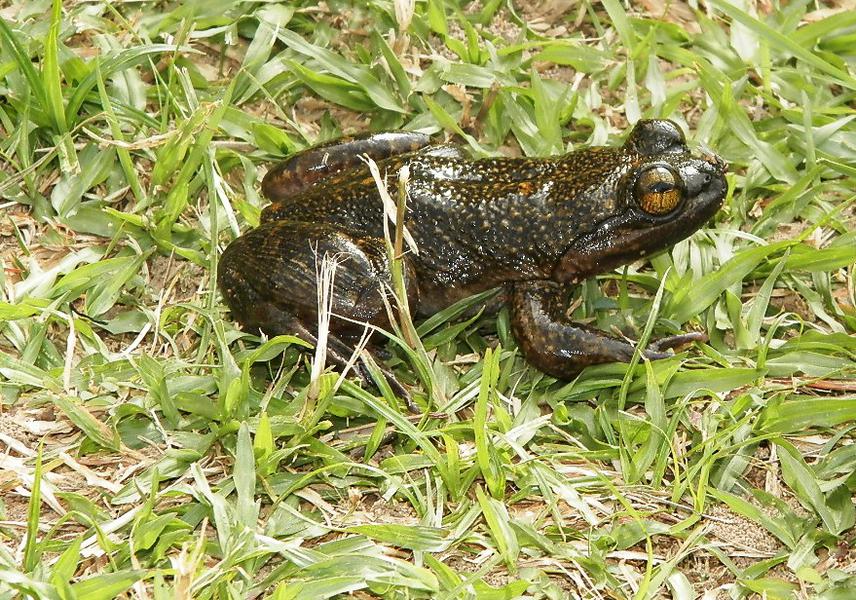Caleb Boateng Ofori
Other projects
7 Jul 2009
Conservation of Two Critically Endangered Frog Species in the Forest Zone of South Western Ghana
9 Feb 2012
Conservation of the Togo Slippery Frog (Conraua derooi) in the Togo-Volta Hills
25 May 2016
Scaling-Up Conservation Efforts for the Long-Term Protection of the Critically Endangered Togo-Slippery Frog (Conraua derooi) in Ghana
This project aims at protecting the last remaining populations of the critically endangered Togo slippery frog (Conraua derooi) in Ghana.

Rare photo of the Togo slippery frog, Volta region, Ghana.
The Togo slippery frog (Conraua derooi) was recently rediscovered after nearly four decades of believed extinction and, still today, it faces an imminent extinction threat due to human consumption and habitat destruction. Two small and isolated populations are known to occur on the Atewa Hills (Eastern Ghana) and in the Togo-Volta Hills (along the Ghana-Togo border). Until recently, conservation efforts have mainly focused on the Atewa Hills. However, due to various attempts to mine the Atewa Hills, continuous survival of the Atewa population can no longer be guaranteed. As a result, current conservation efforts seek to safeguard the Togo–Volta population.
In the Togo-Volta Hills, because the frog occurs outside the official protected sites; its habitat has been severely destroyed. Also, the frog is aggressively hunted by the local people for food.
This project aims at reducing threats and improving conditions for the long term survival of the Togo slippery frog in the Togo-Volta Hills. This will be achieved through carefully-tailored behaviour change education, capacity building and habitat restoration programs.
Specifically, we will use innovative outreach programs that integrate conservation into people’s culture, interest and religion. Further, we will train local people in frog identification, protected area management and tour guiding services. Also, it is intended that by working with local communities, ~2000-5000 native trees will be planted in riparian sites previously destroyed by anthropogenic action.
Important outcomes of this project include significant reduction in frog hunting and consumption, institution of the first amphibian community reserve and restoration of up-to 10-hectares of riparian habitat that significantly benefit the Togo slippery frog.